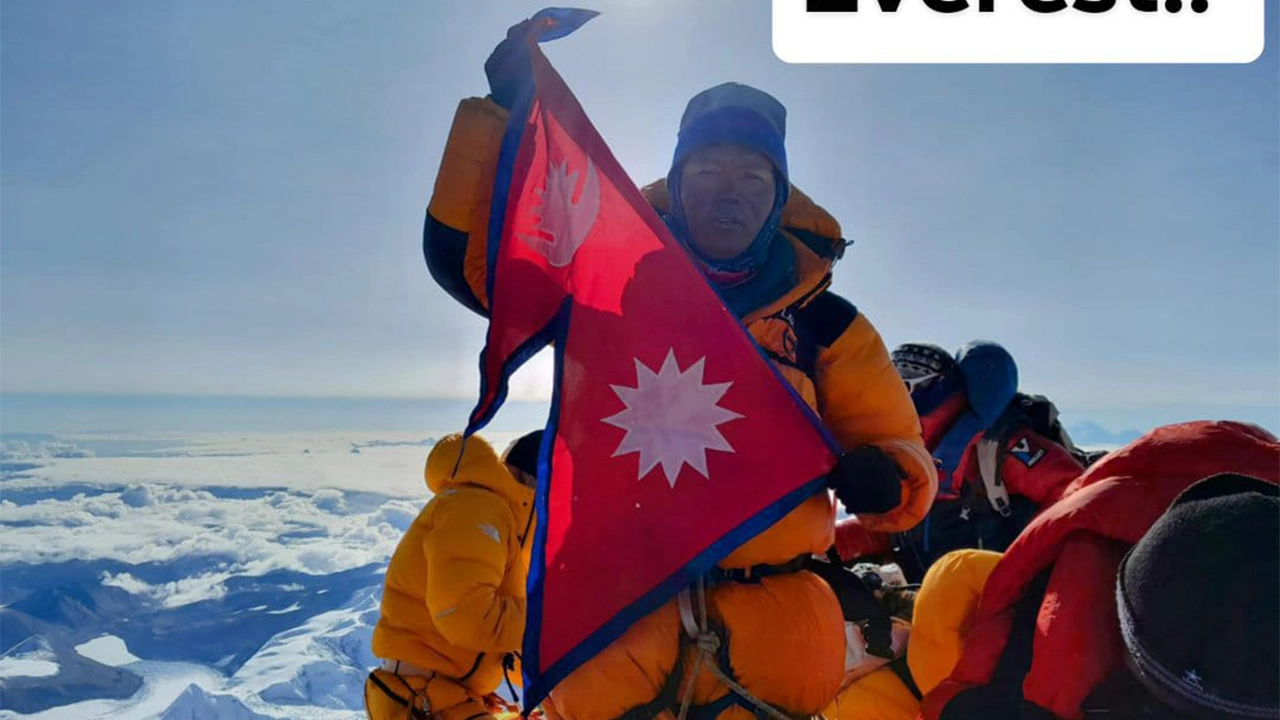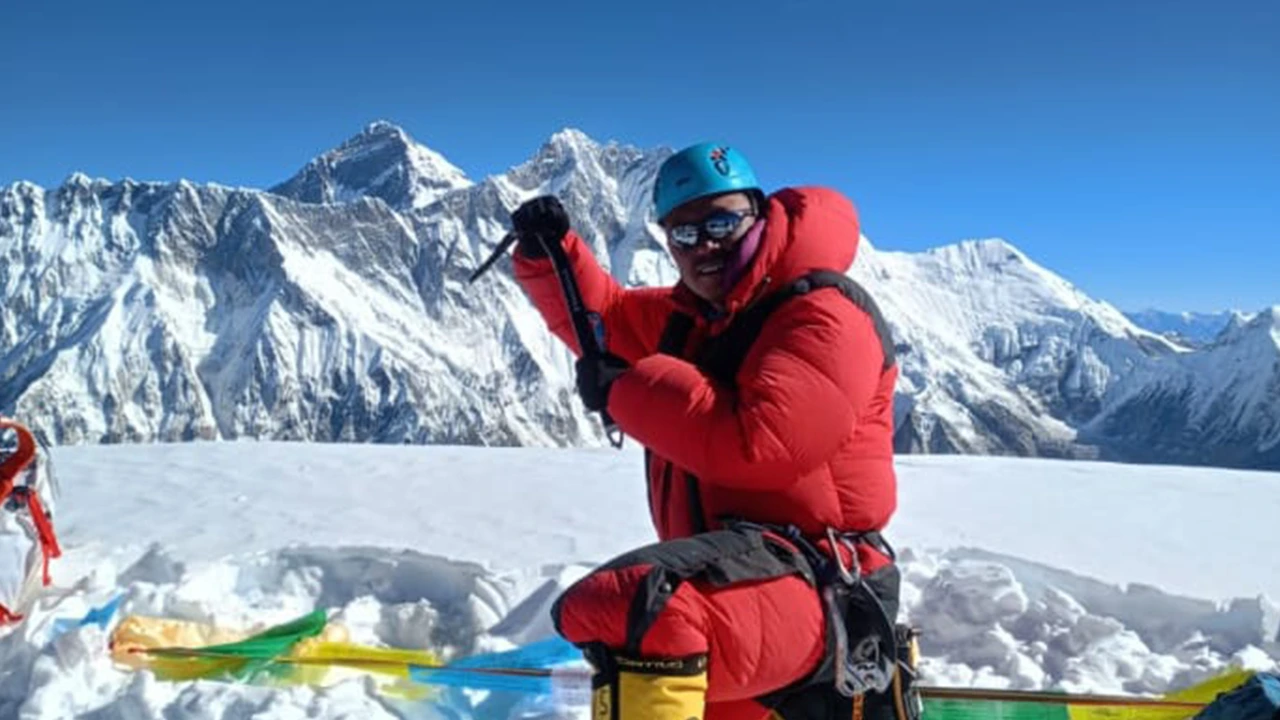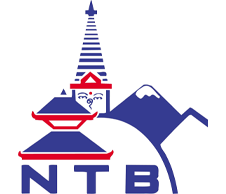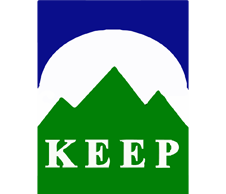Upon arrival at Tribhuvan International Airport, you will be warmly welcomed by our representative and transferred to Hotel Yak & Yeti or a similar standard accommodation. Kathmandu, a city steeped in culture and surrounded by hills, greets you with a lively blend of modern energy and traditional charm. The rest of the day is free to rest and recover from your long journey. If energy permits, you can stroll through the bustling streets of Thamel, lined with trekking shops, local eateries, and colorful handicraft stalls. Dinner and overnight at your hotel.
Everest Expedition

Overview
The Everest Expedition 65 Days is the ultimate adventure for mountaineers seeking to conquer the world’s highest peak, Mount Everest (8,848m). This extensive expedition is carefully designed for climbers who are well-prepared physically and mentally, offering ample time for acclimatization, high-altitude training, and summit preparation. The journey combines challenging mountaineering, trekking through iconic Himalayan landscapes, and cultural immersion in the Khumbu region of Nepal.
The expedition begins with your arrival in Kathmandu, Nepal’s capital, where you will be welcomed and briefed about the entire journey. Here, climbers have time to prepare gear, attend orientation sessions, and explore Kathmandu’s rich culture, including Thamel, Swayambhunath Stupa (Monkey Temple), and Pashupatinath Temple.
Following Kathmandu, climbers fly to Lukla, the gateway to the Everest region, and start trekking through Namche Bazaar, the Sherpa capital, and other villages such as Tengboche and Dingboche. This trek allows gradual altitude acclimatization, helping climbers adjust to the thin air and harsh conditions of the high Himalayas. Along the way, trekkers will experience the unique Sherpa culture, monasteries, and prayer flags, offering an immersive cultural experience.
The expedition route includes the iconic Everest Base Camp (5,364m), where climbers meet fellow adventurers and conduct high-altitude training. From here, the technical climb begins, passing through the Khumbu Icefall, Western Cwm, Lhotse Face, South Col, and finally the summit ridge. The ascent demands knowledge of ice climbing, crevasse navigation, rope techniques, and high-altitude survival skills, making this expedition suitable for experienced mountaineers.
Throughout the journey, safety and acclimatization are prioritized with rotation climbs, rest days, and supplemental oxygen use, ensuring climbers are well-prepared for the summit attempt. The expedition also provides opportunities to observe glaciers, moraines, and dramatic Himalayan landscapes, offering unmatched adventure photography and mountaineering experiences.
After achieving the summit of Mount Everest, climbers descend carefully via the same route, returning to Everest Base Camp, and then trek back to Lukla for a celebratory flight to Kathmandu. The expedition concludes in Kathmandu, where climbers can enjoy local cuisine, shopping, and cultural sites before departure.
This 65-day Everest Expedition is a comprehensive package that blends extreme mountaineering, trekking, and cultural exploration, making it an unforgettable journey for serious climbers aiming to conquer the roof of the world. Key highlights include high-altitude trekking, summit of Mount Everest, Khumbu Icefall crossing, Sherpa culture immersion, and panoramic Himalayan views.
Everest Expedition 65 Days | Major Highlights
1. Complete 65-Day Everest Journey
Experience the full Everest Expedition, from Kathmandu to Everest Base Camp and summit. This is a comprehensive, long-duration climb designed for serious mountaineers seeking the ultimate Himalayan adventure.
2. Summit Mount Everest (8,848m)
Reach the world’s highest peak with the support of experienced Sherpa guides and supplemental oxygen. The itinerary includes full acclimatization rotations, Base Camp preparation, and high camp strategies for a safe summit attempt.
3. Khumbu Icefall & Technical Climbing
Challenge yourself on the iconic Khumbu Icefall, Lhotse Face, and Summit Ridge, using advanced mountaineering skills like ice climbing, rope work, and crevasse navigation.
4. Scenic Trekking Through Sherpa Villages
Trek through Namche Bazaar, Tengboche, Pangboche, Dingboche, and other traditional Sherpa settlements, experiencing authentic Himalayan culture, cuisine, and local hospitality.
5. UNESCO Sagarmatha National Park
Explore Sagarmatha National Park, a UNESCO World Heritage Site, home to unique Himalayan wildlife including red pandas, snow leopards, and Himalayan tahrs.
6. Himalayan Mountain Views
Witness panoramic views of iconic peaks like Lhotse, Nuptse, Ama Dablam, Cho Oyu, and many other 8,000m mountains. Early morning treks offer clear vistas of Everest and surrounding ridges.
7. Cultural & Spiritual Experiences
Visit Tengboche Monastery, Pangboche Monastery, and local religious sites, learning about Sherpa Buddhism and Himalayan traditions.
8. Professional Expedition Support
Benefit from Sherpa guides, high-altitude porters, liaison officers, and fully equipped base camp facilities, including dining tents, communication, and emergency medical support.
9. Optional Adventure Activities
Optionally, enjoy mountain photography, high-altitude training, and mini treks around Everest Base Camp for better acclimatization and stunning landscape shots.
10. Safety and Preparedness
Comprehensive safety measures include supplemental oxygen, high-altitude medical kits, evacuation plans, and pre-expedition briefings, ensuring climbers are well-prepared for extreme conditions and emergencies.
These two days are reserved for expedition preparation and mandatory briefings at the Department of Tourism. Here, you will learn about climbing permits, mountaineering rules, and safety guidelines. Your guides will assist with equipment checks, ensuring that all high-altitude gear is in order. You will also have time for last-minute shopping in Kathmandu’s trekking stores. In the evenings, you may visit UNESCO World Heritage Sites like Boudhanath Stupa or Kathmandu Durbar Square. Overnight at the hotel with meals available in-house or at authentic Nepali restaurants nearby.
Option I: Flight from Kathmandu to Lukla.
Option II: Drive from Kathmandu to Ramechhap, flight from Manthali to Lukla.
Both routes bring you to Lukla’s thrilling mountain airstrip. After meeting your trekking crew and organizing loads, you begin the walk down the Dudh Koshi valley. The trail passes mani stones, prayer wheels, and charming Sherpa houses before reaching Phakding. Suspension bridges draped with colorful prayer flags cross the rushing river, setting the tone for the days ahead. Overnight at a comfortable mountain lodge, where Sherpa hospitality and simple but hearty meals await.
(Start: 1,350m / 4,430ft → End: 2,650m / 8,694ft | Max: 2,860m / 9,383ft | Duration: 4 hrs | ↑200m / ↓–)
Today’s trail follows the emerald waters of the Dudh Koshi River, crossing multiple suspension bridges, including the iconic Hillary Bridge. The route passes through dense forests alive with rhododendrons and pine. After a steep climb, you finally reach Namche Bazaar, the Sherpa capital and the cultural heart of the Khumbu region. Namche is a lively amphitheater town, offering bakeries, gear shops, and stunning views of Kongde Ri and Thamserku. Dinner and overnight at a cozy lodge. Hydrate well and pace yourself, as you have gained significant altitude.
(Start: 2,650m / 8,694ft → End: 3,440m / 11,286ft | Max: 3,440m / 11,286ft | Duration: 6 hrs | ↑790m / ↓–)
This is your first acclimatization day, essential for safe adjustment to higher altitudes. After breakfast, hike to the Everest View Hotel, one of the highest-altitude hotels in the world. From here, enjoy spectacular vistas of Everest, Ama Dablam, and Lhotse. Returning to Namche, visit the Hillary Museum and Sherpa Cultural Center, which showcase mountaineering history and Sherpa heritage. The evening may include a slideshow program on Everest expeditions. Stay overnight at the lodge, enjoying local dishes and warm Sherpa hospitality.
(Start: 3,440m / 11,286ft → End: 3,440m / 11,286ft | Max: 3,800m / 12,467ft | Duration: 3 hrs hike | ↑360m / ↓360m)
The trail begins with gentle contouring around the valley, offering majestic views of Everest and Ama Dablam. After descending to the river and crossing a suspension bridge, you begin a steep climb through forests of fir and rhododendron to Tengboche. At the top, you find the famous Tengboche Monastery, the spiritual center of the Khumbu. Here, you may join monks for evening prayers surrounded by flickering butter lamps and incense. The monastery courtyard provides one of the best views of Ama Dablam glowing in the sunset. Overnight at a lodge near the monastery.
(Start: 3,440m / 11,286ft → End: 3,860m / 12,631ft | Max: 3,860m / 12,631ft | Duration: 5–6 hrs | ↑420m / ↓–)
Descending through forests, the trail crosses the Imja Khola river before climbing steadily into open alpine terrain. You pass through Pangboche village, home to one of the oldest monasteries in the region. The trail gradually widens into the windswept valley of Dingboche, surrounded by stone-walled potato fields and framed by spectacular views of Ama Dablam, Island Peak, and Lhotse. Tonight’s lodge is simple but welcoming, providing warm meals and a comfortable place to rest before climbing higher.
(Start: 3,860m / 12,631ft → End: 4,350m / 14,271ft | Max: 4,350m / 14,271ft | Duration: 4–5 hrs | ↑490m / ↓–)
To strengthen acclimatization, you take a day hike toward Nangkartshang Peak or Chhukung Ri. These ridges offer stunning views of Makalu, Lhotse, and the Imja Valley. The ascent is challenging but rewarding, helping prepare your lungs and body for the upcoming higher altitude. After returning, the afternoon is free for rest, journaling, or light exploration of Dingboche. Evenings are spent around warm stoves in the lodge dining hall, where climbers and trekkers share stories.
(Start: 4,350m / 14,271ft → End: 4,350m / 14,271ft | Max: 4,730m / 15,518ft | Duration: 4 hrs hike | ↑380m / ↓380m)
The trail climbs steadily through the Khumbu valley, passing memorials at Thukla dedicated to climbers who lost their lives on Everest. With prayer flags fluttering in the wind, this solemn spot is a reminder of the mountain’s challenge. Continuing onward, you arrive at Lobuche, a small settlement surrounded by towering peaks. The air is noticeably thinner here—walk slowly and conserve energy. The lodge offers basic meals and accommodation, perfect for resting before the final push to base camp.
(Start: 4,350m / 14,271ft → End: 5,018m / 16,463ft | Max: 5,018m / 16,463ft | Duration: 4–5 hrs | ↑668m / ↓–)
Today’s trek is shorter but more demanding due to altitude. The rocky trail follows the Khumbu Glacier, offering dramatic views of Nuptse and the icy seracs below. After several hours, you reach Gorakshep, the last permanent settlement on the route. The lodge here is very basic but offers hot drinks and simple meals. You will rest here in preparation for the hike to Everest Base Camp the following day. Conserve your energy and hydrate well.
(Start: 5,018m / 16,463ft → End: 5,170m / 16,962ft | Max: 5,170m / 16,962ft | Duration: 3 hrs | ↑152m / ↓–)
In the morning, you ascend to Kala Patthar (5,554m), a renowned viewpoint offering the closest panoramic view of Mount Everest, glowing golden in the sunrise. After returning to Gorakshep for breakfast, you trek to Everest Base Camp, a 2-hour walk over rocky moraines. Arriving at the famous cluster of tents, prayer flags, and climbers, you stand at the gateway to the world’s highest peak. Here, you settle into base camp lodges and expedition tents, preparing for the climbing period.
(Start: 5,170m / 16,962ft → End: 5,200m / 17,060ft | Max: 5,554m / 18,222ft | Duration: 5 hrs | ↑384m / ↓354m)
This extended period is dedicated to acclimatization rotations, technical climbs, and the final summit push. You will establish higher camps (Camp I at 6,065m, Camp II at 6,400m, Camp III at 7,200m, and Camp IV at 7,950m) in stages, gradually adapting to altitude and practicing movement on fixed lines, ladders, and steep ice. Sherpas and guides support with route fixing, oxygen setup, and load carrying. Rest days at base camp include medical checks, weather briefings, and recovery meals. When a stable weather window opens, the summit push begins, ascending progressively through all high camps to reach the summit of Mount Everest (8,848.86m). Standing on the world’s highest point, you will witness an awe-inspiring panorama of the Himalayas stretching endlessly. The descent retraces through the same camps, returning to the safety of base camp.
(Start: 5,200m / 17,060ft → End: 8,848.86m / 29,032ft | Max: 8,848.86m / 29,032ft | Duration: 46 days | ↑3,648m / ↓3,648m)
After weeks on the mountain, today feels lighter as you descend into lower altitudes. The air becomes richer in oxygen, and you can feel renewed strength in your body. Following the Khumbu trail back, you pass Lobuche and return to Dingboche. Lodges here provide warmth, hearty meals, and a sense of relief after the expedition. Tonight is for relaxation and reflection on the immense journey you’ve undertaken.
(Start: 5,200m / 17,060ft → End: 4,350m / 14,271ft | Max: 5,200m / 17,060ft | Duration: 4 hrs | ↑0m / ↓850m)
The trail descends gradually through alpine landscapes back toward Tengboche. The monastery comes into view again, offering a sense of spiritual closure after your climb. If time allows, you may revisit the monastery for blessings and quiet moments of gratitude. Overnight at a lodge in Tengboche, where the altitude is more forgiving and the forests return to view.
(Start: 4,350m / 14,271ft → End: 3,860m / 12,631ft | Max: 4,350m / 14,271ft | Duration: 4 hrs | ↑0m / ↓490m)
Descending further, you re-enter pine and rhododendron forests alive with bird calls. The walk is easier now, and with every step, oxygen levels rise. Reaching Namche feels like returning to civilization, with bakeries, hot showers, and comfortable lodges. Here, you celebrate with fellow climbers and guides, enjoying warm meals and sharing stories of the expedition.
(Start: 3,860m / 12,631ft → End: 3,440m / 11,286ft | Max: 3,860m / 12,631ft | Duration: 4 hrs | ↑0m / ↓420m)
Today is your final trek in the Khumbu Valley, retracing your steps along the Dudh Koshi River. Suspension bridges, prayer walls, and small Sherpa villages mark the way. Though long, the trek feels joyful as you conclude your journey where it began—Lukla. Evening celebrations with your trekking crew and Sherpas mark the end of your Himalayan adventure. Overnight at a Lukla lodge.
(Start: 3,440m / 11,286ft → End: 2,840m / 9,317ft | Max: 3,440m / 11,286ft | Duration: 7 hrs | ↑0m / ↓600m)
In the morning, you take a scenic flight back to Kathmandu, leaving behind the high peaks but carrying unforgettable memories. Upon arrival, you are transferred to Hotel Yak & Yeti. The rest of the day is free to rest, enjoy hot showers, and indulge in city comforts. Dinner is on your own, with many excellent restaurants nearby.
(Start: 2,840m / 9,317ft → End: 1,350m / 4,430ft | Max: 2,840m / 9,317ft | Duration: 35 min flight | ↑0m / ↓1,490m)
This day is reserved as a buffer in case of flight delays from Lukla. If flights are on schedule, you can enjoy a leisurely day in Kathmandu. Options include shopping for handicrafts, visiting Pashupatinath Temple, or simply relaxing at the hotel spa. In the evening, a farewell cultural dinner with traditional Nepali dance and music will celebrate your successful Everest journey. Overnight at the hotel.
After breakfast, our representative will transfer you to Tribhuvan International Airport for your onward flight. As you leave Nepal, you carry with you the profound experience of standing on the world’s highest peak and memories of Sherpa culture, Himalayan beauty, and personal triumph.
Cost Includes
- Pickup and drop-off at Tribhuvan International Airport, Kathmandu.
- Round-trip flight Kathmandu – Lukla – Kathmandu.
- 4-star hotels in Kathmandu and Lukla/trekking teahouses along the trail.
- Breakfast in Kathmandu and Pokhara, full board (breakfast, lunch, dinner) during trekking.
- Sagarmatha National Park entry permits, TIMS card, and local taxes.
- Sherpa guides, high-altitude porters, and liaison officer support.
- Shared kitchen tents, dining tents, high-altitude climbing gear (ropes, ladders, etc.) for Base Camp to summit.
- Supplemental oxygen for summit push along with masks and regulators.
- First-aid kits, emergency oxygen cylinders, and communication devices for rescue.
- Visits to Namche Bazaar, Tengboche Monastery, Dingboche, and other Sherpa villages.
- Pre-expedition gear orientation, mountaineering tips, icefall training, and summit strategy sessions.
Cost Excludes
- International airfare to/from Nepal.
- Personal trekking or climbing equipment (boots, sleeping bags, harness, crampons, etc.).
- Tips for guides, porters, and crew.
- Travel insurance (high-altitude/evacuation insurance is mandatory).
- Optional activities in Kathmandu, Lukla, or Everest region.
- Beverages, alcohol, and snacks during trekking.
- Emergency medical expenses not covered by expedition insurance.
FAQs
The Everest Expedition is for experienced mountaineers with high physical endurance. You should have prior experience in high-altitude trekking and ice climbing, be comfortable with long-duration climbs, and have excellent cardiovascular fitness. Training should include aerobic exercises, strength training, stair climbing, and carrying weighted backpacks. Mental preparation is equally important, as the expedition involves harsh weather, isolation, and extreme conditions.
Yes. Climbers are expected to have technical mountaineering skills, including crevasse rescue, rope handling, and ice climbing techniques. While Sherpa guides provide support, self-sufficiency and high-altitude experience are critical for safety and success.
Acclimatization is carefully planned with rotation climbs, rest days, and gradual altitude gain. Key stops include Namche Bazaar (3,440m), Dingboche (4,410m), Lobuche (4,940m), Everest Base Camp (5,364m), and high camps. Supplemental oxygen is used during summit pushes, and climbers are monitored for altitude sickness symptoms.
The optimal climbing windows are pre-monsoon (March–May) and post-monsoon (September–November). Pre-monsoon provides slightly warmer weather and calmer skies for views of Himalayan peaks, while post-monsoon offers clear skies and stable weather, though temperatures can be colder.
The ascent is technically demanding. Key challenges include:
- Khumbu Icefall: Navigate deep crevasses and shifting ice with ladders.
- Western Cwm: Glacial valley with crevasses and snowfields.
- Lhotse Face: Steep ice wall requiring fixed ropes and crampons.
- Summit Ridge: Exposed, high-altitude section with strong winds.
Each segment demands mental focus, stamina, and technical skill. Summit success depends on weather conditions, acclimatization, and teamwork with Sherpas.
Essential gear includes:
- High-altitude mountaineering boots, insulated clothing, down jacket
- Crampons, ice axe, harness, helmet, carabiners
- Sleeping bag rated for −30°C
- Trekking poles, gloves, and thermal layers
- Sunglasses with UV protection and sunscreen for high-altitude sun exposure
Most technical gear is supported at Base Camp, but personal equipment is mandatory.
Safety measures include:
- Experienced Sherpa guides leading climbs
- Rotation climbs for acclimatization
- Supplemental oxygen during high-altitude ascents
- High-altitude medical kits and communication devices
- Emergency evacuation plans to Lukla or Kathmandu if necessary
Apart from mountaineering, climbers explore Sherpa villages, monasteries, and Namche Bazaar markets, learning about Himalayan culture, local cuisine, and Buddhist rituals. Key cultural stops include Tengboche Monastery, Pangboche village, and Dingboche, offering insight into the spiritual and daily life of the Everest region.
No, this expedition is not recommended for beginners. Climbers should have prior high-altitude experience, advanced mountaineering skills, and physical fitness to handle the extreme conditions over 65 days.
The summit window typically lasts 3–7 days depending on weather conditions. Climbers must be ready for sudden changes in weather, high winds, and low temperatures. Summit attempts are only made when conditions are safe, and flexibility is essential.
Everest Expedition
Trekking & Hiking Adventure




